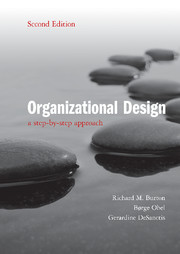Book contents
- Frontmatter
- Contents
- Figures
- Tables
- Preface to first edition
- Preface to second edition
- An outline of the step-by-step approach
- Step 1 Getting started
- Step 2 Strategy
- Step 3 Structure
- 4 The configuration and complexity of the firm
- 5 Distributed organizations
- Step 4 Process and people
- Step 5 Coordination and control
- Applying the step-by-step approach in a dynamic world
- References
- Index
5 - Distributed organizations
from Step 3 - Structure
Published online by Cambridge University Press: 05 June 2012
- Frontmatter
- Contents
- Figures
- Tables
- Preface to first edition
- Preface to second edition
- An outline of the step-by-step approach
- Step 1 Getting started
- Step 2 Strategy
- Step 3 Structure
- 4 The configuration and complexity of the firm
- 5 Distributed organizations
- Step 4 Process and people
- Step 5 Coordination and control
- Applying the step-by-step approach in a dynamic world
- References
- Index
Summary
Introduction
In the previous chapter you described the organization in terms of its basic structure. Today many organizations operate in multiple locations and use variants of the basic organizational structures presented in Chapter 4. Distributed organizational designs enable firms to coordinate work across national and other geographic boundaries and meet the knowledge needs of our increasingly service-oriented economy.
- Type
- Chapter
- Information
- Organizational DesignA Step-by-Step Approach, pp. 85 - 108Publisher: Cambridge University PressPrint publication year: 2011

